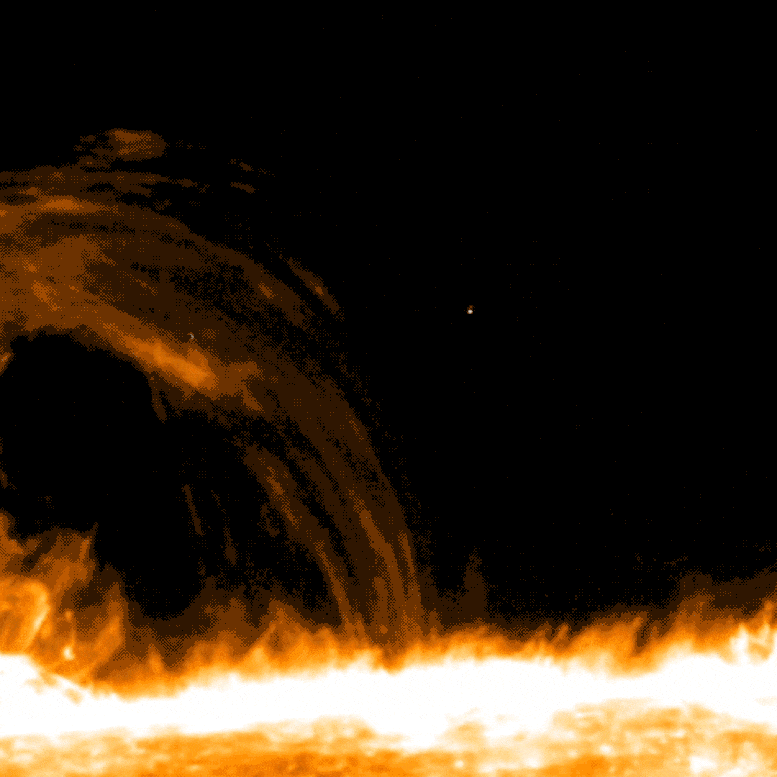
These images showing nanojets on the Sun were captured by NASA’s IRIS mission on April 3, 2014. Credit: NASA’s Goddard Space Flight Center
NASA’s IRIS Spots Nanojets: Shining Light On Heating the Solar Corona
In a paper published today (September 21, 2020) in Nature Astronomy, researchers report the first ever clear images of nanojets — bright thin lights that travel perpendicular to the magnetic structures in the solar atmosphere, called the corona — in a process that reveals the existence of one of the potential coronal heating candidates: nanoflares.
In pursuit of understanding why the Sun’s atmosphere is so much hotter than the surface, and to help differentiate between a host of theories about what causes this heating, researchers turn to NASA’s Interface Region Imaging Spectrograph (IRIS) mission. IRIS was finely tuned with a high-resolution image to zoom in on specific hard-to-see events on the Sun.
In pursuit of understanding why the Sun’s atmosphere is so much hotter than the surface, and to help differentiate between a host of theories about what causes this heating, researchers turn to NASA’s Interface Region Imaging Spectrograph (IRIS) mission. Credit: NASA’s Goddard Space Flight Center/Scientific Visualization Studio
Nanoflares are small explosions on the Sun – but they are difficult to spot. They are very fast and tiny, meaning they are hard to pick out against the bright surface of the Sun. On April 3, 2014, during what’s known as a coronal rain event, when streams of cooled plasma fall from the corona to the Sun’s surface looking almost like an enormous waterfall, researchers noticed bright jets appearing near the end of the event.
These telltale flashes are nanojets — heated plasma traveling so fast that they appear on images as bright thin lines seen within the magnetic loops on the Sun. Nanojets are considered a “smoking gun,” key evidence of the presence of nanoflares. Each nanojet is believed to be initiated by a process known as magnetic reconnection where twisted magnetic fields explosively realign. One reconnection can set off another reconnection, creating an avalanche of nanojets in the corona of the Sun, a process that could create the energy that is heating the corona. In the visualization above, the Solar Dynamic Observatory gives us a full view of the Sun before zooming into IRIS’s up close view of the nanojets, which briefly light up in the magnetic loops.
IRIS gathers its high resolution images by focusing in on a small portion of the Sun at a time. So observing specific events is a combination of educated guesswork and looking at the right place at the right time. Once the nanojets were identified against the backdrop of the coronal rain, researchers coordinated with NASA’s Solar Dynamics Observatory (SDO) and the Hinode observatory, a partnership among the Japan Aerospace Exploration Agency, ESA (European Space Agency), and NASA to get a complete view of the Sun, and confirm whether they were detecting nanojets, and assess their effects on the corona.
The researchers combined the many observations with advanced simulations to recreate the events they saw on the Sun. The models showed that the nanojets were a telltale signature of magnetic reconnection and nanoflares, contributing to coronal heating in the simulations. More studies will need to be done to establish the frequency of nanojets and nanoflares all over the Sun, and how much energy they contribute to heating the solar corona. Going forward, missions like Solar Orbiter and Parker Solar Probe can give more detail into the processes that heat the solar corona.


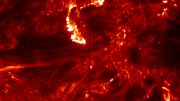
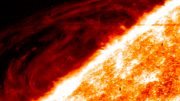

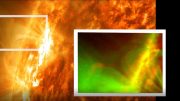
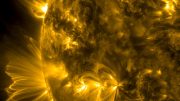
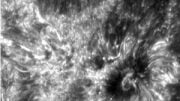
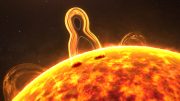
Those jets with hotspots are little interference black holes in a new theory called Q-FFF Theory. By interference of magnetic particles, they form little knots of stringy particles compressed by the surrounding oscillating string vacuum.
“Black holes”? The search comes back as a link to the pseudoscience site vixra, adds the crackpot term “conscious string theory” and – no surprise here – with your own name.
So not only not suitable trolling for a science site. (And really, string theory, after it got whacked in the LHC for not producing thermal dark matter?) But also self promotion, which is generally frown on.
[Note to self: The evidence against string theory as producing natural thermal WIMP dark matter in natural supersymmetry string theory is now even stronger than LHC and the electron sphericity experiment ACME. We can add the recent Fermi-LAT observations of no WIMP signature in the galactic core emissions: https://journals.aps.org/prd/abstract/10.1103/PhysRevD.102.043012 .]
Soon, very soon the majority of humanity will have no need to view the surface of the sun in photo images… oh no! Jesus is returning very soon to judge the fallen. They will get to experience that environment in real time… for ever!
Superstition.
“A current problem in plasma physics is that observed reconnection happens much faster than predicted by MHD in high Lundquist number plasmas (i.e. fast magnetic reconnection). Solar flares, for example, …” [ https://en.wikipe…nnection ].
So these things are literary hot research topics!
Anyone who has read and understands Maxwell’s equations recognizes the 90° relationship between the magnetic field and the observed light phenomena… it is called electricity! It is the only source of magnetism and electric arcs are a well known cause of heat and light. Magnetic reconnection (magnetic monopole) cannot occur if existing understanding is correct. Wake up! Electricity explains all of the phenomena from coronal heating to solar wind acceleration without creating new theoretical models to compound the patchwork of justifications that got us here. The sun is electric.
No, the solar system including the Sun is “gravitic” – gravity controlled – as is the rest of the universe, see modern general relativistic (gravity) LCDM cosmology. And stars specifically are fusion driven, which in turn via (mostly) magnetohydrodynamic processes generates magnetic fields.
This is not sloppy opinion of comments but well known, observed and quantified science [ https://en.wikipedia.org/wiki/Sun ]. “The Sun is the star at the center of the Solar System. It is a nearly perfect sphere of hot plasma,[18][19] heated to incandescence by nuclear fusion reactions in its core, radiating the energy mainly as light and infrared radiation. It is by far the most important source of energy for life on Earth.” “The Sun currently fuses about 600 million tons of hydrogen into helium every second, converting 4 million tons of matter into energy every second as a result. This energy, which can take between 10,000 and 170,000 years to escape from its core, is the source of the Sun’s light and heat.”
And specifically here: “A stellar magnetic field is a magnetic field generated by the motion of conductive plasma inside a star. This motion is created through convection, which is a form of energy transport involving the physical movement of material. A localized magnetic field exerts a force on the plasma, effectively increasing the pressure without a comparable gain in density. As a result, the magnetized region rises relative to the remainder of the plasma, until it reaches the star’s photosphere. This creates starspots on the surface, and the related phenomenon of coronal loops.[1]” [ https://en.wikipedia.org/wiki/Stellar_magnetic_field ]
If “electric” was a reference to the pseudoscience myth “electric universe”, consider giving it a rest – few believes in and few will believe in such against-observed-evidence bleating.